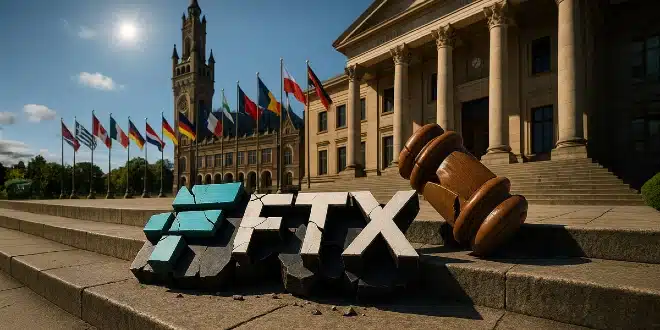A group of Chinese creditors is challenging FTX’s latest bankruptcy motion, which seeks to restrict fund distributions to users in certain jurisdictions where cryptocurrency regulations are ambiguous or prohibitive.
The legal dispute centers on the bankrupt crypto exchange’s proposed exclusion of users in 49 countries—including China, Russia, North Korea, and Morocco—from its payout plan, citing potential regulatory risks.
Key Filing Challenges FTX’s Jurisdictional Argument
On July 8, 2025, Weiwei Ji, a creditor of FTX and a Chinese passport holder who resides in Singapore, filed an objection in the Delaware Bankruptcy Court. Representing a group of over 300 similarly affected individuals, Ji argued that the proposal unfairly targets Chinese users based on misinterpretations of the country’s regulatory framework.
China accounts for the majority—over 80%—of the claim value in regions potentially facing exclusion under the proposal. If the plan is approved, creditors in these jurisdictions could be disqualified from participating in the ongoing asset distribution under the FTX bankruptcy proceedings.
Ji contends that there is no legal or regulatory basis to exclude Chinese users from payouts, especially since the FTX claims are denominated and settled in U.S. dollars rather than digital currencies. According to Ji’s filing, these USD distributions could be received by Chinese creditors through lawful methods, such as wire transfers to accounts in Hong Kong.
“The FTX Recovery Trust’s rationale for withholding distributions from Chinese users lacks any credible legal or regulatory justification,” Ji wrote. “There is no substantiated risk of regulatory penalties or criminal liability arising from these payments.”
Clarifying Crypto’s Legal Status in China
A critical point in Ji’s argument is the distinction between crypto ownership and trading in China. While authorities have cracked down on crypto exchanges and speculative trading, owning digital assets like Bitcoin and Ethereum remains legal under Chinese civil law.
Ji referenced multiple court rulings to support this position, including a notable 2024 decision by a Shanghai court that affirmed cryptocurrencies as protected personal property. These decisions suggest that while financial institutions are barred from facilitating crypto transactions, individual holdings still receive legal recognition and protection.
He also pointed to Hong Kong’s distinct legal system, which operates under a separate regulatory framework and has actively embraced crypto innovation. With its support for regulated exchanges and digital asset licensing, Hong Kong offers a compliant pathway for fund transfers and settlement, further undercutting FTX’s jurisdictional concerns.
Precedents from Other Crypto Bankruptcies
To bolster his case, Ji cited precedents from earlier high-profile bankruptcy cases in the crypto space. In the Celsius Network bankruptcy, for instance, Chinese creditors received their distributions in U.S. dollars without regulatory complications. Similarly, during the Mt. Gox rehabilitation process, Chinese claimants were paid through the Kraken exchange, with no jurisdiction-based restrictions applied.
These examples, Ji argued, demonstrate that cryptocurrency or fiat-based creditor settlements involving Chinese residents are feasible and have been executed lawfully in comparable situations.
Court to Review FTX Motion on July 22
FTX’s motion remains under judicial consideration ahead of a scheduled hearing on July 22 in Delaware. Ji and the group he represents are urging the court to strike down any regional exclusion rules that would bar Chinese creditors from receiving their share under the proposed bankruptcy resolution.
The outcome of the hearing could set a broader precedent for how international claimants—especially those in countries with restrictive or uncertain crypto laws—are treated in large-scale bankruptcy proceedings involving digital asset platforms.
For now, affected creditors are watching closely, as the court’s ruling could determine whether regulatory gray areas become barriers to recovery.


